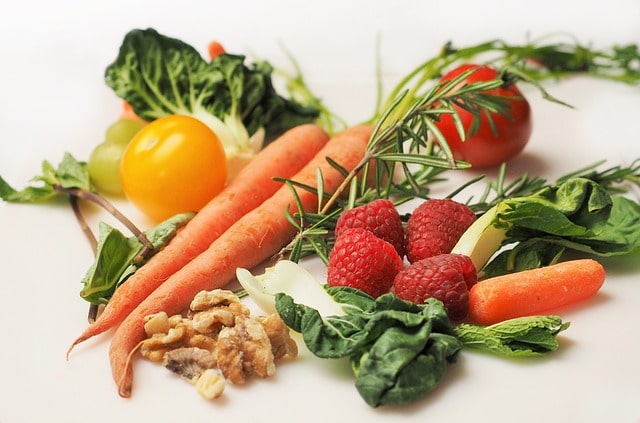Have you ever felt duped after finding out that some of your favorite “vegetables” are genuinely fruits in disguise? You’re no longer alone. Many common foods like tomatoes and avocados that we think of as veggies are technically fruit. Even as the difference between fruits and greens would possibly seem trivial, understanding that it can truly assist with meal planning and getting the proper dietary stability. In this blog, we’ll disclose 10 sneaky produce imposters that faux to be vegetables whilst they are definitely just wolves in sheep’s apparel. Get prepared to discover which of your go-to veggies were fooling you all along and learn why botanically, some greens are more fruit than you realized.
Why are Some Fruits Called Vegetables?
Some fruits are generally called vegetables because of their flavor, use, or vitamins. For instance, tomatoes and cucumbers are normally used in savory dishes like salads, so we consider them more as veggies. Nutritionally, many fruits we call vegetables are low in sugar and excessive in vitamins like lycopene or vitamin C. Some fruits have been also bred to be less sweet over time to healthy certain culinary uses.
Also Read > Everything About Snowkiting Sport
The Top 10 “Vegetable” Imposters Revealed
You’ve been duped! Some of your favorite veggies are secretly fruits.
1. Tomatoes
The tomato is admittedly a fruit. Botanically speaking, a fruit is the part of the plant that includes the seeds. Tomatoes fit the bill. But, in 1893 the U.S. Supreme Court ruled that tomatoes are greens based on their use. So tomatoes enjoy dual citizenship as both a fruit and vegetable.
2. Cucumbers
Cucumbers also are technically a fruit. Like tomatoes, cucumbers are a part of the cucumber plant that holds the seeds. But, cucumbers are normally used and organized like greens in cooking and eating. Their mild flavor and crunchy texture work better in savory dishes compared to naturally sweet tomatoes.
3. Green beans
Green beans, additionally called snap beans, are the fruit of bean plants. The green bean pods contain bean seeds, so that they meet the definition of fruit. Green beans are usually grouped with vegetables due to their moderate, savory flavor when cooked. They work nicely in dishes like stir-fries, casseroles, and salads.
4. Bell peppers
Bell peppers come in a difference of colors like crimson, yellow and green. But irrespective of the colouration, bell peppers are virtually fruits. They comprise the seeds of the pepper plant. Bell peppers are utilized as veggies in cooking by prudence of their gentle, exquisite flavor. They’re awesome for sautés, fajitas, mixed greens and stuffed peppers.
5. Pumpkins
Pumpkins are another notable fruit taking on the appearance of a vegetable. Pumpkins are a sort of winter squash that incorporates the seeds of the pumpkin plant. Although pumpkins are normally utilized in sweet programs like pie, they are botanically a fruit. Their sweet flesh, seeds and even flora are fit to be eaten.
6. Eggplants
Eggplants, like peppers and tomatoes, are members of the nightshade’s own family and develop on a flowering plant. The eggplant itself develops from the ovary of the plant’s flower and includes smooth, fit-to-eaten seeds. So while we call it a vegetable, the eggplant is biologically a fruit.
7. Squash
Zucchini, pumpkins, and other squash are all botanically labeled as fruit. They grow from the ovary of a flower and incorporate seeds. Squash flora are within the Cucurbitaceae family along with cucumbers and melons. Even though squash is usually prepared and served as a vegetable, it’s far technically the fruit of the plant.
8. Avocados
Avocados are technically a fruit, not a vegetable. The creamy avocado carries a large seed, that’s a feature of fruits. Avocados grow on timber and comprise healthful fats, unlike most veggies. So the next time you are making guacamole or adding avocado to a salad, realize that you’re having a fruit, not a vegetable.
9. Olives
Olives are another popular fruit generally fallacious for a vegetable. Olives grow on olive bushes and contain a pit, signaling they are a fruit. Olives are generally cured in brine or olive oil before eating, which helps dispose of their bitter taste and develops extra complex, savory flavors. Whether having olives in a Mediterranean plate of mixed greens, tapenade unfold, or straight out of the container, olives should be classified as a fruit.
10. Zucchini
Zucchini, otherwise called summer squash, are immature fruit of the zucchini plant. Despite the fact that zucchini is consistently cooked like a vegetable, it’s far naturally a fruit. Zucchini grows from a safe-to-eat flower and consists of seeds, like different fruits. Whether grilled, baked, or spiralized into zoodles, zucchini is a fruit masquerading as a vegetable.
These imposters fit the botanical definition of fruit. So the next time you have a salad or veggie tray, know that it’s secretly more fruit than you realize! But as far as cooking goes, we’ll keep calling them vegetables. Follow Journal Sea for more!
